Some of my thoughts on The Legend of Zelda
Brief insights into the games I’ve played from the series
While I don’t spend a lot of my time playing video games, there are a few franchises that will compell me to spend some of my spare hours in front of a screen (or two). For the most part they are Nintendo franchises, but they also feature Kingdom Hearts and Puyo Puyo Tetris. The series that never fails to draw me in, however, is The Legend of Zelda, which I’d like to talk about briefly in this article.
I haven’t played all the games in the series, and not all of the ones I’ve played I’ve done so to the end. Someone really special to me is currently playing through the games in the series, and inspired by that, I thought it might be nice to write down some of my thoughts on them as they come back to me — it’s been a good while since I played most of these.
Here they are, in no particular order.
The Legend of Zelda: The Minish Cap
The Legend of Zelda: The Minish Cap is a Game Boy Advance game released in 2004 in Japan and 2005 in the Americas. The game was developed by Capcom and Flagship — an indie game studio from Japan that was dissolved in 2007 — with Nintendo acting as an overseer. It was the first game in the series I played, and it happened completely by chance: the game didn’t even belong to me! The game’s art style takes after Wind Waker’s, but that seems to show only in the concept art and box artwork. Story, gameplay, mostly everything else has nothing to do with it as far as I can tell.
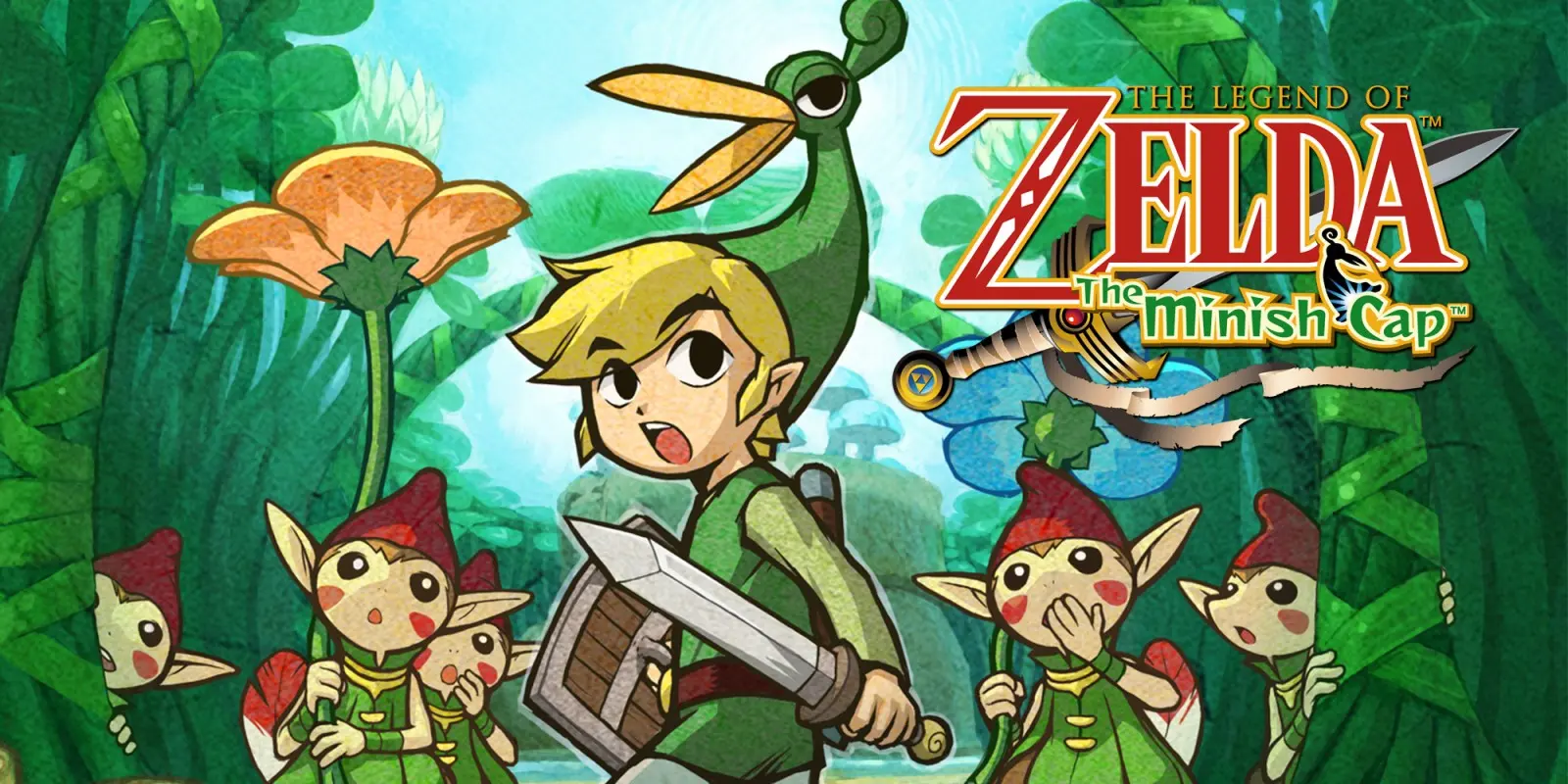
Cover art for The Legend of Zelda: The Minish Cap
Naturally, the player controls Link, who partners up with Ezlo, a talking hat. There are these miniature people sometimes called Picori, sometimes Minish. The item selection in the game is somewhat similar to that of A Link to the Past, though maybe that’s just me conflating them since they’re both 2D titles.
For a Game Boy Advance game, this is a considerably long game, taking players an average of 15 and a half hours to finish the main part of the story. Since GBA cartridges can’t fit a lot of data, the world map might feel a little small compared to the one in ALttP, and places are revisited a few times.
One interesting mechanic in The Minish Cap that could’ve come back in later games is the matching of Kinstones. To summarize it, the player can collect these semi-circular stones with different “connecting shapes” that are akin to jigsaw puzzle pieces, and fuse them with a matching counterpart that belongs to random NPCs, for bonuses and at times to progress with the story.
Some highlights:
- It’s easy to pick the game up, play for a little bit, and pause it, since the puzzles and dungeons aren’t too complicated or long, with a few exceptions here and there — looking at you, Palace of Winds!
- There’s enough challenge and dungeons to go through, unlike what you might expect from a portable game, which goes to show you can do a lot with a tiny bit of data and a lot of creativity.
- The colorful 2D art style looks really neat! The low resolution of the GBA starts to feel like a blessing, as it’s given us more colorful pixel art than we would’ve seen otherwise. Thanks, Nintendo!
All in all, The Minish Cap is not a very difficult title to pick up if you can handle top-down 2D action games, and it is a good introduction to the franchise as it features many of the characteristics of the portable games that preceded it (i.e. Link’s Awakening and the Oracle games) and of A Link to the Past. It holds a special place in my heart for being my first game in the series.
For those interested in playing it, it is available for purchase on the Wii U eShop as a Virtual Console title, and Nintendo 3DS owners who were part of Nintendo’s Ambassadors Program should be able to download it from the 3DS eShop while it’s still up. If you have a GBA, you can also scour eBay for a cartridge. As far as I know, there are no other legal ways to play it as of the time of this writing.
The Legend of Zelda: Twilight Princess
The Legend of Zelda: Twilight Princess is a GameCube and Wii game released at the end of 2006. It was originally meant as a GameCube exclusive, but with the console’s lackluster sales and the imminent launch of the Nintendo Wii (codename Revolution), Nintendo delayed it for about a year so the game could be a Wii launch title. It was the last first-party title for the GameCube, and one of the first for the Wii, making it both the end and start of a console generation. The game was later remastered in HD for the Wii U.

Cover art for The Legend of Zelda: Twilight Princess HD, for the Wii U
This might be the only game in the franchise in the beginning of which Link isn’t asleep. Link’s an inhabitant of Ordon Village, a tranquil place in southern Hyrule. He plays with the local kids, helps out in a ranch, and runs errands for a couple of the other villagers as they are necessary. Sure, the whole “chosen hero” trope reveals itself to be part of the story, but you’re shown just how monotonous this guy’s life is in the beginning in an unbearably long “tutorial” section.
Once you’re past the tutorial section, the game still takes a little while to pick up, as it needs to introduce you to the game’s main mechanic: as this odd “atmosphere” swallows entire areas of the world, Link turns into a wolf. Yes, a wolf! You can’t quite swing a sword as a wolf, so enjoy the taste of your enemies as you fight them in that form and put your “wolf instincts” to use with finding “tears of light” at every area in sections that Nintendo shortened in the Wii U remaster.
The art style for this game, much like its story, feels very “mature,” which is what fans of the series were asking for since the first GameCube demo of a Zelda game was shown at E3. Those who like focusing on a game’s story will find this game more jampacked with goodies than other titles, and boy is it long! 37 and a half hours to finish the main story, roughly; 30 if you’re playing the HD remaster.
Here are a few highlights:
- Should appeal to people into mature, darker themed art styles, as opposed to the colorful, fantastical direction of most other games in the series. Not my cup of tea, but it fits the game’s story rather well!
- When you’re feeling a lack of variation in the way you play other Zelda games, picking this one up and exploring the overworld as a wolf, using some of the tools to traverse Hyrule, and galloping around might feel refreshing.
- Wind Waker feels like an adventure, Twilight Princess makes you feel badass.
You will feel no shortness of content in Twilight Princess, in fact quite the opposite if you’re not the kind to spend many hours at once on a game, able to immerse yourself in its story and gameplay. Epic boss fights await you in one of the most refined Zelda games since Ocarina of Time. Wouldn’t recommend it as an introduction to the series due to how much of a time investment it is, but if you enjoyed a couple other 3D games, this one should appeal to you!
For those interested in playing it, the HD remaster is available for purchase on the Wii U if you can get your hands on one. If you can get your hands on a Wii or a Wii U and the Wii version of the game on disc, you should be able to play it. The Wii can also play the GameCube disc, while the Wii U needs some clever trickery for that to be possible.
The Legend of Zelda: Ocarina of Time
Released at the end of 1998 for the Nintendo 64, The Legend of Zelda: Ocarina of Time is a legendary title in the Zelda franchise and in the history of video games, being the first 3D installment in the series and ranked by many as the greatest video game title of all time.

Cover art for The Legend of Zelda: Ocarina of Time
After extending and cementing the series’ format with A Link to the Past, Nintendo faced the challenge of translating their vision for the series to 3D, making use of the power of the Nintendo 64. Somehow they pulled it off so well it became a point of reference for adventure games and for all future games in the franchise. The hardware limitations affected the size and scope of the game, but it would take over a decade for fans to get a remake.
Link is a boy living in the Kokiri Forest among the Kokiri, a fairy loving people composed of kids who canonically never grow up. Truly Neverland-like. One day, the spirit that protects the forest, the Great Deku Tree, summons Link and tells him of his fate and Hyrule’s. In no time, Link sets out on an quest to bring together some maguffins and take them to the Temple of Time.
As stated before, the game was remade once, in 2011. The Legend of Zelda: Ocarina of Time 3D is hauled as the definitive edition of Ocarina of Time, addressing a lot of the problems with the original game — the remake runs at a smooth 30 fps, for starters — and giving it such a modern look the Nintendo 3DS release could easily be ported to the Nintendo Switch without need for major graphical changes.
Noteworthy bullet points:
- This game set the standard for 3D installments in The Legend of Zelda. Future games in the series all took inspiration from it, and you can expect few changes in the core game mechanics, as Nintendo likes to innovate without restarting from scratch.
- The art style is that of a fantasy world, without feeling too childish and without being too dark. It’s a good balance that stands between the likes of Twilight Princess and Wind Waker.
- It’s a classic game that should be played by everyone! Good for introducing players to 3D Zelda.
While shorter than games like Wind Waker and Twilight Princess, Ocarina of Time still packs quite a bit of content, taking you roughly 25 hours to beat if you’re playing the 3D remake. It’s a really nice game that can easily be picked up by a novice player. I remember preordering the remake and waiting outside in the cold for the game to be delivered. Good times.
For those interested in playing it, the game is obviously available if you can get your hands on a Nintendo 64 and original cartridge, but you can also get yourself a GameCube and try getting a special bonus disc given to those who preordered Wind Waker, containing Ocarina of Time and Master Quest — a more difficult version of the game. That disc should be played on the Wii, but the game was also released as a Wii Virtual Console title. Oh, it was also a Wii U Virtual Console title later on, still available for purchase on the eShop today. Or… you can get the remake for the Nintendo 3DS!
The Legend of Zelda: Link’s Awakening
In 1993, shortly after the release of A Link to the Past, Nintendo released the first portable The Legend of Zelda game: The Legend of Zelda: Link’s Awakening, for the Game Boy. The game had started as an after hours pet project that grew into a bit of a club of Nintendo developers. As it gained shape and was pitched as an official game, more efforts were put into developing its gameplay and story. The game was ported to the Game Boy Color under the name Link’s Awakening DX, and recently remade for the Nintendo Switch.
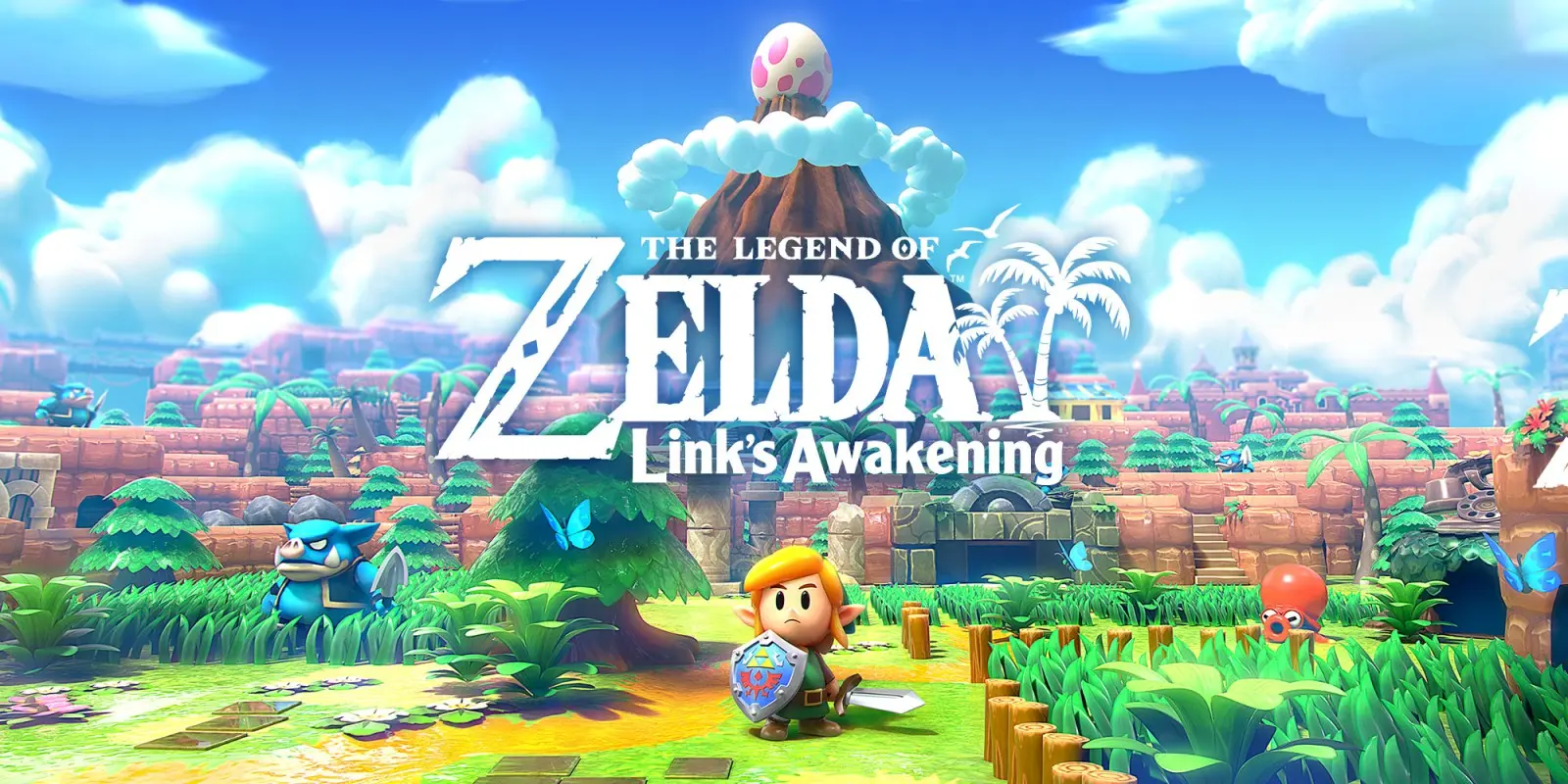
Cover art for The Legend of Zelda: Link’s Awakening, for the Nintendo Switch
One of the more original and creative installments, Link’s Awakening starts with a cutscene of Link’s boat breaking down as he is hit by a storm. Link falls unconscious, and wakes up to find himself on an island containing a mountain with a giant egg sitting on top of it. That’s it, no Princess Zelda, no Agahnim, no Ganon, no Triforce. You will see cameos from other Nintendo games, primarily characters and elements from Super Mario Bros., but no classic Zelda appearances — apparently this was by design!
You might not stop to think about this while playing the game, but the story of Link’s Awakening is quite sad! Play through the game and maybe read or watch an analysis or two of the story. You’ll probably want to play it again with your newfound respect for its romanticism. I don’t want to spoil anything, so go give it a chance and pay attention to your interactions with the NPCs!
Of note:
- It’s a rather short game, being the first portable Zelda and all, clocking at around 14 hours for the main story in the Switch remake, and just slightly longer for the original and DX versions.
- The gameplay feels like a natural improvement over A Link to the Past, which goes to show the developers were passionate about both their projects, honing what they had implemented on the SNES.
- While some puzzles or battles aren’t immediately obvious, it’s a very easy game that anybody can pick up and have fun with. It’s a great first title, though that’s more of a rule than an exception with this franchise.
You’d be surprised with how much there is to explore in a seemingly tiny game like this. Some people criticize the art direction in the Switch remake, but in my opinion it doesn’t take away anything from the game unless you’re unable to take it seriously without Game Boy graphics.
For those interested in playing it, the remake is available for the Switch, but you can also get Link’s Awakening DX for the 3DS as a Virtual Console title. The original game was made for the Game Boy, with DX being a Game Boy Color title, in case you can get your hands on those platforms and cartridges.
The Legend of Zelda: Oracle of Ages
Released for the Game Boy Color alongside Oracle of Seasons in early 2001, The Legend of Zelda: Oracle of Ages was one of two Zelda games developed by Capcom for the GBC. Rumor has it a third game was planned for the Game Boy Color, but rather than finish whatever work was put into it at the time, the company dropped everything to make The Minish Cap, for the Game Boy Advance.
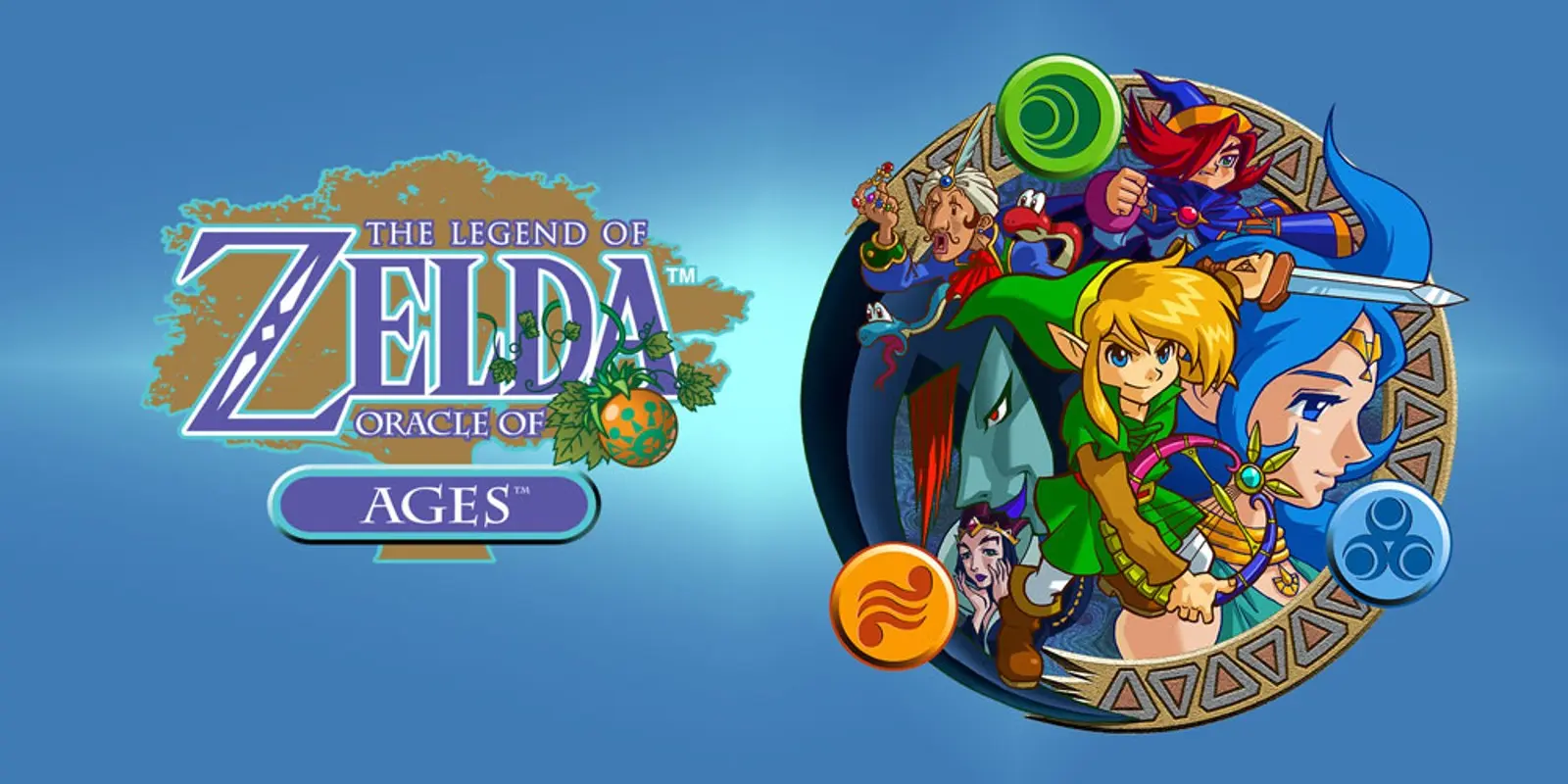
Cover art for The Legend of Zelda: Oracle of Ages
I might be a little spotty on the details, but the gist of the story is that Nayru, a blue haired singer Link comes across in the beginning of the game, hides a secret power: she’s actually the oracle of ages, able to travel and control time. Veran, an evil sorceress, naturally covets this power for herself and one day successfully attains it by possessing Nayru. She proceeds to set time itself into disarray, affecting entire areas in the present and past.
No, I did not finish this one, I’m afraid. I played a good chunk of it, but not to the end, sadly. At the time I was playing it on my DSi through… creative methods. Those methods either stopped working or I found myself a new toy to fiddle with, which was likely the Nintendo 3DS. It would take another few years for the Oracle games to be officially released on the platform, so don’t blame me too much. I’ll get back to it eventually.
I remember reading somewhere that the main difference between Ages and Seasons is the fact that the former focuses on puzzles, featuring more or more interesting content for puzzle lovers compared to the latter title, which keeps its head on the battles or something to that effect. It’s been long enough I cannot attest to the verisimilitude of such information.
Since I haven’t finished this title and my memories of it are hazy at best, I’ll refrain from making a list of highlights. I remember having fun with it, but not being too keen I would go back immediately. Perhaps a replay of it in the future will make me update this entry in the list. We’ll see!
For those interested in playing it, it is available as a Virtual Console title for the Nintendo 3DS. Other than that, I think you’re looking at getting yourself a Game Boy Color or… being creative. The kind of creativity that leads us to wearing an eyepatch, if you catch what I’m saying. Not that I’m telling you to go and do it, that’s between you an your conscience.
The Legend of Zelda: Oracle of Seasons
Take a look at the above entry, for Oracle of Ages, as the same points apply here. The one relevant — or not — difference here being I didn’t play as much of this one as I did Ages.

Cover art for The Legend of Zelda: Oracle of Seasons
Whereas in Oracle of Ages you have Nayru, who can control time, and Veran, who covets that power, in Oracle of Seasons you have dancer Din, who holds power over the seasons, and Onox, who covets and takes over that power. Can seasons translate into an interesting mechanic, or plot device? I mean, yeah, but time does sound more interesting, does it not?
One interesting thing to note: there is additional content in each game if you’ve finished the other and can access your save data. Something was added to the 3DS for that, if I’m not mistaken. Look into it if you’re interested in that kind of package deal.
For those interested in playing it, it’s also available as a Virtual Console title for the Nintendo 3DS.
The Legend of Zelda: Majora’s Mask
Using, with very few differences, Ocarina of Time’s engine and assets, The Legend of Zelda: Majora’s Mask was released in 2000, also for the Nintendo 64. Nintendo took roughly 1 year to develop the game, which features a rather annoying time cycle mechanic that gives the player the chance to follow not just the rather sinister overarching story, but also catch glimpses at the lives of the other characters in the game.

Cover art for The Legend of Zelda: Majora’s Mask
A young Link’s traveling with a young Epona through the woods when he’s attacked by a couple of fairies and a Skull Kid wearing an interesting looking mask. The encounter ends with Link being turned into a mere Deku scrub. Skipping a few of the details, Link meets a mysterious mask salesman, who is really eager to recover the precious mask Skull Kid stole from him. Oh, and the moon’s crashing down on Earth. In 3 days. Enjoy the festival, it comes once a year!
Beloved by many — though not as many as Ocarina of Time — this game takes a somber tone pretty early on, what with the theme of death and whatnot. It is argued that Majora’s Mask takes you noticeably through the stages of grief as the player and the characters alike come to realize their mortality and the futility of their every action before the sheer magnitude of the moon crashing down on everyone. And just when they thought they would have fun in the festival!
Nintendo remade the game for the Nintendo 3DS a few years after they did the same to Ocarina of Time. The public outcry in demand for the remake started even before the release of Ocarina of Time 3D, with entire campaigns going around on Kickstarter and online petition websites. Everybody was signing it, not that it accomplished much of anything, as remaking the game just made commercial sense and would’ve happened naturally anyway, many would argue.
The remake brought along the same assortment of amenities of the one that came before it, but made changes that those more fanatic about Majora’s Mask denounce rather harshly. I’m not going to elaborate on that too much, but will mention there’s a set of patches made by a community of players who were in a state of unrest with the situation. Project Restoration is the name.
No, I did not finish this one. In fact I haven’t even played a good portion of it, despite knowing it’s not that long a game. The cycling time mechanic really doesn’t appeal to the likes of me, who would rather be out taking my time exploring than trying my best to catch the little bit of drama I can get from a character’s story on time slot X of day Y. I’ll get to it eventually, a certain someone will guarantee that.
Like with the Oracle games, I’m not going to bother with a list of highlights, seeing as I can’t do the game justice when I haven’t finished it. All in due time, dear reader. All in due time. The special someone I mentioned in the introduction to this article liked the game quite a bit, so I’m sure I will too.
Want to play it? Like I said, there’s a remake for the Nintendo 3DS. The Nintendo 64 original was also a Virtual Console title for the Wii and Wii U, and if you fork over the kind of money Nintendo is asking for the Expansion Pack of their online subscription service, you can even play it on the Nintendo Switch. If you have a 3DS or can work some magic to conjure something akin to one, the remake is well worth your trouble.
The Legend of Zelda: Skyward Sword
In 2011, Nintendo would throw a publicity campaign for the 25th anniversary of the The Legend of Zelda series. Among the games released during that campaign was the highly anticipated The Legend of Zelda: Skyward Sword, an original Zelda game for the Nintendo Wii to call its own, seeing as Twilight Princess was a GameCube turned Wii title.
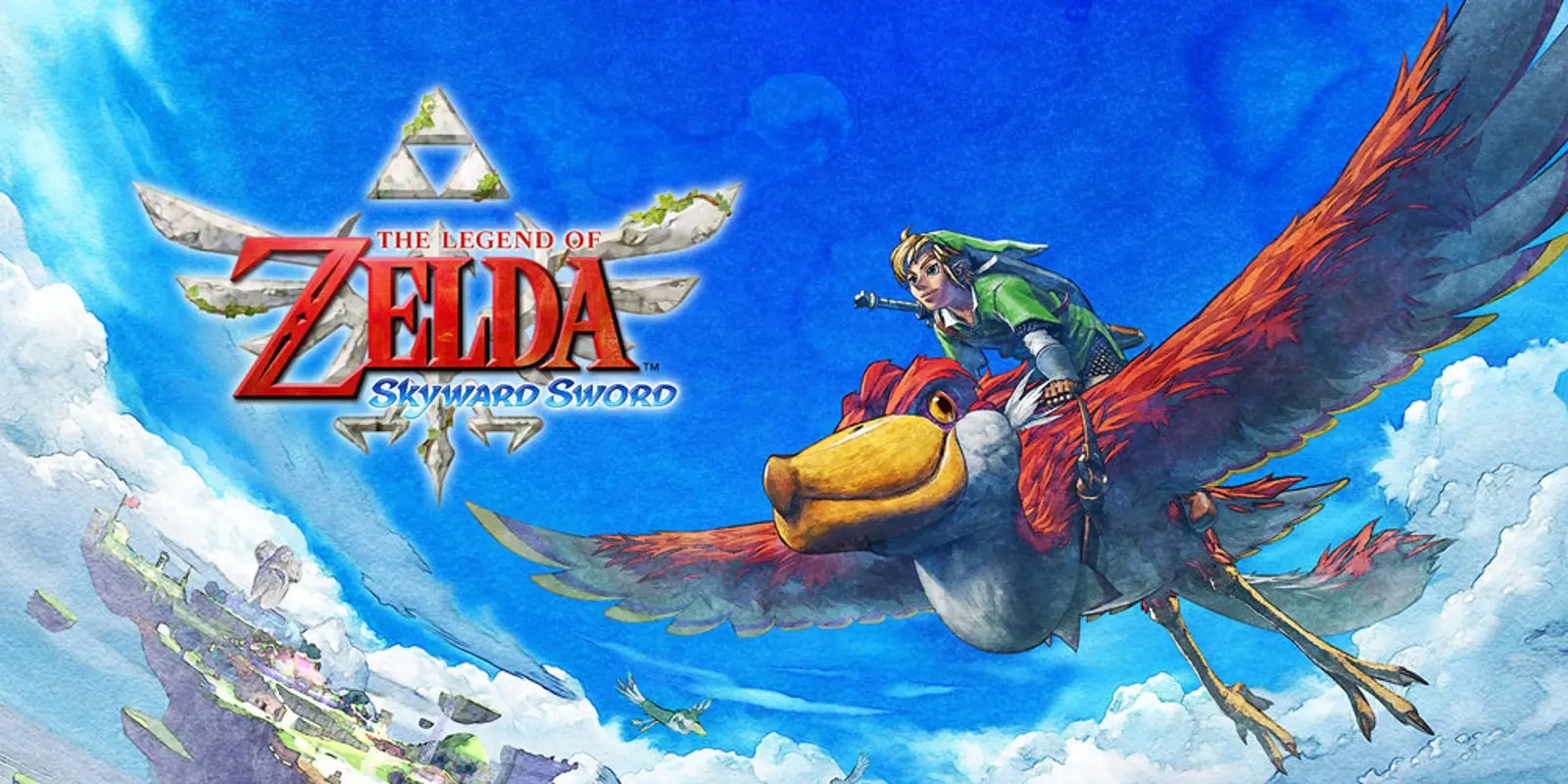
Cover art for The Legend of Zelda: Skyward Sword
Link is training in Skyloft’s Knight Academy, to join the ranks of the knights who patrol and defend the skies. He lives on top of the clouds in Skyloft, an archipelago of floating islands that his people call home. Similar to how the Kokiri in Ocarina of Time have fairies that accompany them for life, the inhabitants of Skyloft have loftwings — shoebill looking birds they fly on — that are spiritually connected to them. The surface that lies beneath the clouds is off-limits to everyone. That is, until…
Fully utilizing the motion controls that felt lackluster in the previous title, Skyward Sword was in the minds of franchise fans bound to feel like the most immersive sword wielding experience ever! The limitations of the Wii remote had been for the most part addressed by the Wii Motion Plus accessory and the line of Wii remotes that came with it built into them — the Wiimote Plus — so this was for sure going to be the best and most realistic thing ever, right? Well, the more or less accurate motion controls were there…
Nintendo needed to give meaning to the kind of movements that became possible
with the improved motion controls. Instead of going the admittedly complicated
route of just giving us accurate looking wounds, parrying and the like, the
sort of motion you perform with the sword controller ties directly into
combat. The result of such an addition was that combat — which before was a
good complement to the puzzles the player would find in dungeons — now had
mindless puzzle elements to them: you can’t just cut down an evil carnivorous
plant with your sword, you need to swing it just the right way to slash along
the seam of its mouth, that being its weak spot. Rinse and repeat for all other
enemies.
It’s hard to say that Nintendo did not miss the mark with the sort of controls that governed Skyward Sword. Turning every enemy fight into a “find the weak spot” routine just made players wish to avoid combat altogether. Had this game come out soon after the Wii’s launch, it would’ve been a compelling pitch for the novelty of the Wiimote. Instead, it came at the end of the console’s lifecycle, after the waggle-oriented motion controls had been endlessly ridiculed by Sony and most other video game fans. I’m a fan of motion controls, believe me, but Skyward Sword is not an example of a good application of them.
Despite its many flaws, including repetitive backtracking, an empty overworld, an art style that didn’t appeal to many, and the antiquated hardware that showed its age when connected to anything other than a CRT television, Skyward Sword is NOT a bad game! It’s a fun Zelda experience, even if at times you end up infuriated by the controls. The dungeons don’t fail to entertain, the music is amazing, and the story is actually interesting.
To point out a few things:
- The watercolor art style is very hit or miss: if you’re a fan of watercolor art, you’re going to love it! If you’re not, you’ll probably despise it and go back to Twilight Princess. The style actually allows for interesting performance tweaks!
- Shortly after this game came out, Hyrule Historia was released, creating a canonical chronology for the games in the series, and placing this at the start of it all! Prophetic in nature, the story does seem in accordance with such placement.
- The game’s soundtrack is entirely orchestrated, and the game was sold with the The Legend of Zelda: 25th Anniversary Orchestra CD. Truly a great way to celebrate the 25 years of the series. It’s been a while, huh?!
The game was ported over to the Nintendo Switch recently, and while maintaining the Wii assets, the port runs at a stunning 1080p 60fps in docked mode, 720p 60fps in handheld mode. If it had done otherwise without a graphical upgrade, we would’ve all been disappointed. The port also features a control mode that relies on the right analog stick for the sword motion, for those who care not for the motion controls. Try it out!
Those tempted to play it can of course get it physically for the Wii, get the Wii game on the Wii U eShop to play in Wii mode, or get the Nintendo Switch port that was released in 2021. Creative types can also find creative ways to play the original game in high resolution, if they are so determined.
The Legend of Zelda: The Wind Waker
The year is 2002. Nintendo’s console of the generation is the GameCube, a more powerful machine than the massively successful PS2, and they are about to release The Legend of Zelda: The Wind Waker. In a tech demo at E3, Nintendo showcased a battle between Link and Ganondorf, both looking like modern renditions of their Ocarina of Time counterparts. The Wind Waker would look nothing like that, instead going for a cartoon art direction that caused quite the divide amongst fans.
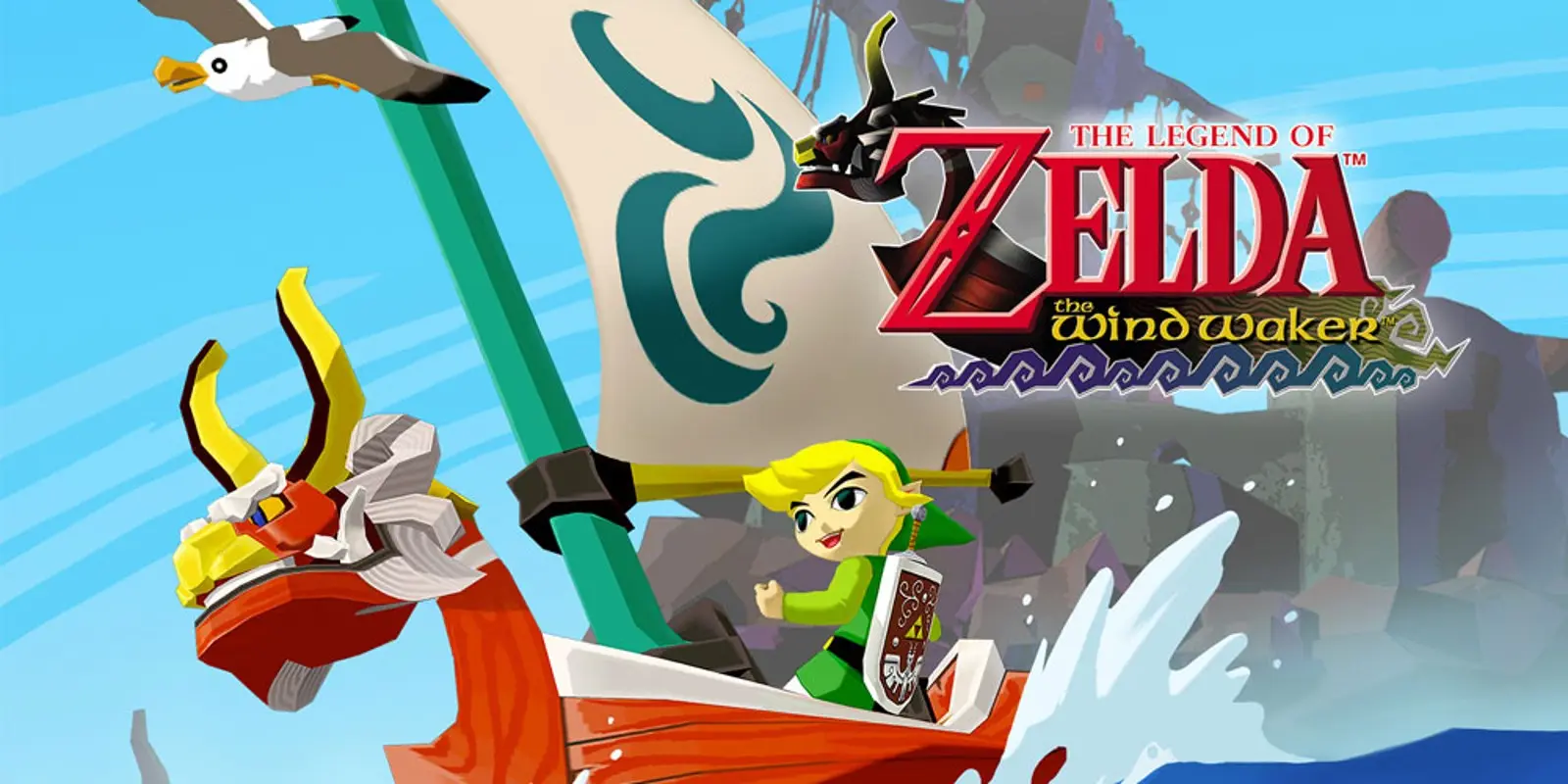
Cover art for The Legend of Zelda: The Wind Waker
Link is a simple islander, leading a more or less idyllic life with his grandma and his sister. That is until this huge bird flies over the island and drops what looks like a girl, who lands in a forest at the top of a mountain. The chain of events that followed result in Link’s sister Aryll being kidnapped by the giant bird, and Link setting sail with these pirates that turned up, in a desperate attempt to find and save his sister. The great flooding? A curse? Ganondorf? Link never asked for any of this, he just wants to save his sister and come back home.
With cell-shaded visuals and a cartoon art style, it’s safe to say the graphics of The Wind Waker aged far better than would’ve otherwise more realistic ones for the time. That much is obvious when comparing the GameCube remakes / ports on the Wii U: The Wind Waker HD and Twilight Princess HD. The former has stunning visuals enhanced by shaders, and is a great definitive edition of the game, while the latter feels like a lazy port that could’ve done with a graphical upgrade.
This is one of my favorite games in the franchise. I really do like everything about it: the art style, the music, the story, the sailing, all of it! It’s hard to think this game was overlooked by so many purely due to the way it looked. The Wii U remake gives more life to the game with the higher resolution, blur effects, and whatnot. If you ever have the opportunity to play this game, here’s me asking you to do it.
Highlights as usual:
- Sailing through the world, visiting different islands, getting to know the layout of the ones you’ve visited, and exploring potentially uncharted lands makes this feel like the kind of adventure you’d wish to embark on as a kid.
- The art style stood the test of time and aged rather well, still looking amazing to this day. The Wii U remake is one of the best looking games I’ve played to date, and the music was reworked as well using higher quality samples.
- There’s plenty of content to explore, with a few surprises awaiting you along the course of the story. The remake will take you on average 25 and a half hours.
To me, this is seriously a masterpiece of a game, and I won’t ever be able to do it justice by writing at length about it. I invite you to see it for yourself, and if you can, play the Wii U remake as it comes with upgraded visuals and quality of life improvements.
If you feel inclined to play it, the game is available for the GameCube, which you can get or be “creative” about, and the remake is still available for the Wii U if you can get your hands on one or once more be creative. It’s possible to play the GameCube disc on the Wii.
The Legend of Zelda: Phantom Hourglass
Most games in this franchise are presented as isolated stories, with no real observable continuity. Released for the Nintendo DS in 2007, Phantom Hourglass is an exception: it’s a direct sequel to The Wind Waker, starting by showing Link traveling with a companion — who shall not be named here — he met in the course of that game. Naturally, this game features the same cell-shaded art style featured in the GameCube prequel, and we’re all scared of what it might’ve looked like if it had taken after Twilight Princess instead.
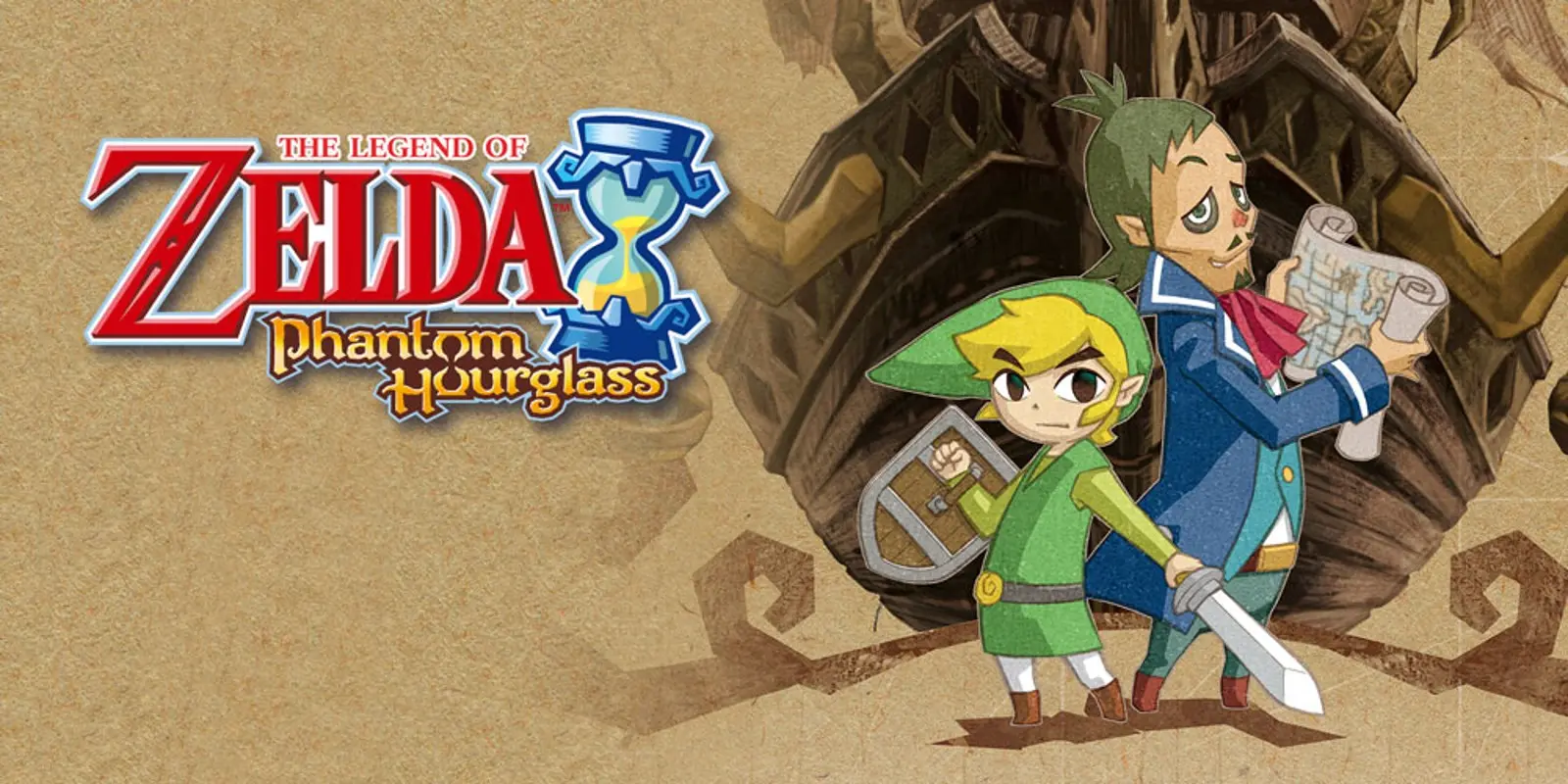
Cover art for The Legend of Zelda: Phantom Hourglass
Link’s sailing the seas again, accompanied by some of the characters from The Wind Waker, when a ghost ship appears before them. How do we know it’s a ghost ship? It looks like one. That ghost ship abducts one of Link’s friend, and Link falls into the water as he desperately tries clinging to the ship that just took his companion. He washes up at an island, where he meets a fairy, some old dude, and later a legendary sailor by the name of Cpt. Linebeck — who honestly has the best theme track of video game history.
Phantom Hourglass takes the sailing adventure from The Wind Waker to the Nintendo DS, with a similar overall soundtrack and art direction. The story is not as profound (pretentious much, me?) as the prequel’s, and the 3D graphics of the Nintendo DS resemble the PS1. Also, as a replacement for using an analog stick and buttons, since the DS doesn’t have an analog stick, here’s a perfectly good touchscreen. Memorize these gestures and don’t scratch that screen too much!
If you can get past the controls, there’s a portable version of the sailing experience you got with The Wind Waker before it. Sure, it looks funny at times due to the graphics performance of the DS, and the soundtrack sounds very compressed compared to what you heard on the GameCube, but it’s not bad! You get to scribble on the map for notes, something the game kinda pushes you to do to make progress.
Onto our usual bullet points:
- The game makes creative use of Nintendo DS features like the built-in microphone, putting the DS in sleep mode, and the touchscreen for puzzles. On top of that, the game uses riddles for you to figure out what location to go to or look for.
- Small islands spaced by oceans gives the illusion of a bigger world crammed into a tiny set of dual screens. Puzzles are for the most part small enough you can turn your DS on, play for a little bit at a time, and put it to rest for another few hours.
- Boss battles make use of both screens, and change perspective a little bit to make it more cinematic as you figure out what to do to win the fight. It’s genuinely impressive at times, given the DS doesn’t seem to be as capable as it is.
In the end Phantom Hourglass isn’t anything amazing, but if you can get past using the touchscreen for everything, it’s actually quite fun. It’s safe to say it is, much like Spirit Tracks, easily overlooked. Neither is particularly challenging, except for the controls themselves. “It’s pretty forgettable, but still fun while it lasts,” is a good summary for this game
If you want to play it, the game was only ever released for the Nintendo DS, with no remakes or ports ever coming out. The heavy use of DS features probably means it’ll never again see the light of day in another form. You’re able to play it on the Nintendo 3DS if you get the DS cartridge, due to retrocompatibility.
The Legend of Zelda: Spirit Tracks
Two years after the release of Phantom Hourglass, a sequel set a century after the game’s events comes out. Also released for the Nintendo DS, Spirit Tracks takes place in New Hyrule, a land that settlers from the flooded Hyrule arrived at a hundred years ago.
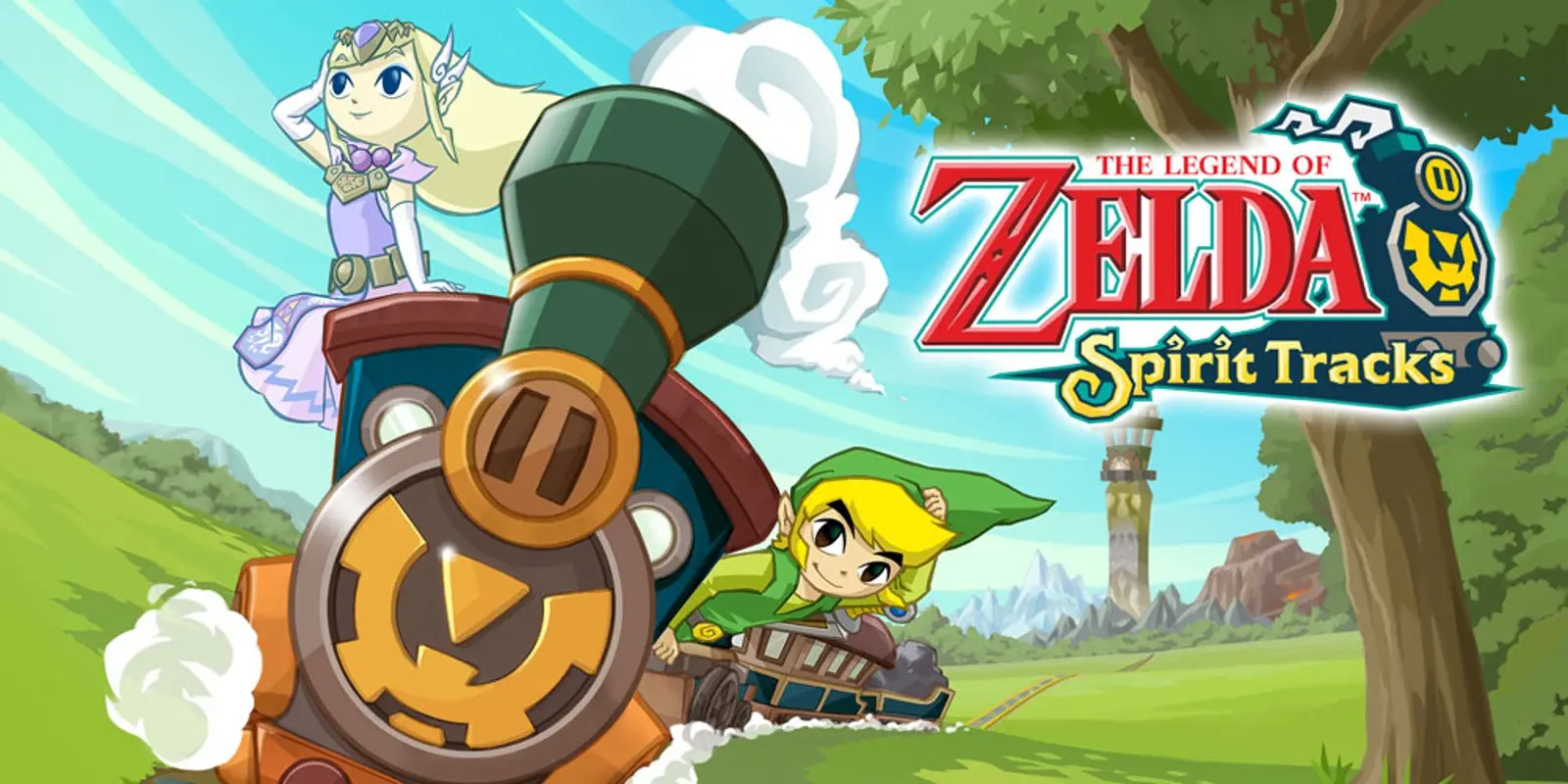
Cover art for The Legend of Zelda: Spirit Tracks
That’s right, our friends from Phantom Hourglass found some land to call their own, and very creatively decided to christen it New Hyrule. Since the world isn’t as flooded anymore, the boats that used to sail the seas gave way to trains, and everyone’s suddenly looking into becoming train engineers / conductors, including our protagonist, Link.
The Hylian monarchy that was pretty much absent in The Wind Waker and Phantom Hourglass is back in full swing, and Princess Zelda personally oversees Link’s graduation into a fully capable conductor. Having graduated and met a princess, Link is on his merry way home when the train tracks fizzle into thin air! How could this happen?!
Complexity wise, this game is just like Phantom Hourglass, but the padding time spent in travel is now spent on train tracks laid out all around the land. Your job is to restore them and keep them from disappearing. While nice for train enthusiasts, in my humble opinion the tracks take away from the feeling of adventure that free sailing in the ocean gave us in this game’s prequels. It doesn’t feel like you can go wherever you like, and the excitement over riding a train wanes quickly.
Once again you’re using the touchscreen for most of your gameplay. Didn’t like it in Phantom Hourglass? You’re not going to like it here, as it is pretty much the same thing. The game doesn’t do a whole lot that its predecessor did not, but it’s still a fun game. The mostly unappealing — to me, that is — controls and premise made me postpone playing this game for the longest time. I finally got around to it circa 2011.
Enough yada yada, bullet points:
- The riddles of Phantom Hourglass are no more, as far as I can remember! If you had trouble with those — I did a couple times, I’m not proud of it — you’ll be happy to see that just as the train tracks, your way is laid out for you more clearly this time around.
- Great if you’re a fan of trains, as long as you’re not looking for a realistic train simulator. Enjoy navigating the overworld’s tracks and making deliveries of various goods to different stations. You can also upgrade your train.
- If you liked the gameplay of Phantom Hourglass, you’ll like this one for sure!
I’m not the biggest fan of this game, that’s for sure. It was annoying to clear, I’ll tell you that. I did it, though, and I do think it was worth my time, despite not recommending it. Do the Nintendo DS’s odd looking graphics and the touchscreen controls not shoo you away? Then by all means, play the game!
In case you’ll play it, the situation is the same as with Phantom Hourglass: this game was only ever released for the Nintendo DS, with no remake or port in sight. Get a DS or a 3DS and the cartridge, or get creative!
The Legend of Zelda: Breath of the Wild
Ever since Nintendo showcased a tech demo for the Wii U that showed Link fighting this big spider, everyone was extremely excited to see what kind of Zelda game would grace our eyes within that generation. Nicknamed Zelda U, it was 5 years in development, being scrapped completely once or twice, shown off in a trailer that people like me are occasionally going back to just for the chills it generated. Much like Twilight Princess, this game marked the end and the beginning of a console generation, being the last first-party title released for the Wii U and perhaps the first title made for the Nintendo Switch.

Cover art for The Legend of Zelda: Breath of the Wild
“Open your eyes,” Link heard as he woke up from his slumber. Woah, this is an odd place in which to sleep, he probably thought, and then he let the voice in his head guide him outside the shrine he found himself in. Standing at the edge of a cliff, he — and of course, the player — witnesses a stunning view, tainted only by the dark aura surrounding Hyrule Castle. Well, it’s not like Link remembers anything about it.
The Legend of Zelda: Breath of the Wild is the most recent crown jewel of the Zelda team. It was released to a lot of critical acclaim, and just like with Ocarina of Time in the Nintendo 64 era everyone’s been trying to learn a thing or two from Nintendo and replicate its success. It’s a simple take on the open world formula that other companies have implemented for decades with a ton of complicated mechanics on top. All I want is to be thrown into the game and pick everything up without reading a tutorial.
Critical acclaim is pretty much universal for this game, and the list of awards is, well, I’m not sure because I’m not some kind of video games fanatic, but it must be long or at least reasonably significant. It isn’t without reason, of course: while many will say the overworld is rather empty, there is no lack of things to do in Breath of the Wild, even after you think you fully completed the game. Fans of this game pour hundreds of hours into it, playing with the physics engine, replaying it in hero mode, and trying out the DLC. I’m told there’s a motorbike.
No spoilers, let’s be brief:
- Out of all the games in the franchise, it’s safe to say this one gives you the most freedom to explore and take on the obstacles that stand in your way, be it the weather, a mountain, or powerful enemies. You can set as many restrictions as you like for youself and still somehow manage to save the world, including jumping straight into the final boss once the game starts.
- The soundtrack, the ambience, the art style, they’re all fantastic in this installment of The Legend of Zelda. You won’t be left wanting in that regard, and the story is pretty neat as well. Whereas Skyward Sword was a starting point to the series’ chronology, this feels like an end point, uniting the separate timelines outlined by Nintendo.
- Your weapons break here. It’s a problem if you grown attached to them and there’s a shortage of the kind of weapon you want or need where you are. Nintendo will likely address this in the sequel, but… it’s there, so keep it in mind.
- Perhaps the most relevant cause for divided opinions, Breath of the Wild doesn’t really have dungeons in the classic Zelda fashion. If that’s the reason you like the games so much, you might not like this one as much.
Guess that wasn’t very brief in the end. Oh well. I played quite a bit of this game on the Wii U, but didn’t finish it until I got it on the Switch years later. While it isn’t the smoothest game — framerate wise — ever on either console, I did perceive better performance on the Switch. Either way the game is fantastic, and Wii U owners who played it didn’t get a worse experience by any stretch.
Keen to give it a go? It’s available for the Wii U and the Nintendo Switch. Creative types with incredibly powerful machines are able to creatively play the game on another platform, with mods and improvements scattered ‘round the ’net. Not that I’m encouraging you to do that, far from it! Don’t sue me, Nintendo.
The Legend of Zelda: A Link to the Past
Another installment hailed as one of the greatest games of all time, The Legend of Zelda: A Link to the Past was released at the end of 1991 / beginning of 1992 for the Super Nintendo. It was the third game ever made in the franchise, and pretty much introduced what can only be called “the Zelda formula”: dungeon layout, dungeon items, enemies, the spin attack, Kakariko Village, and so on were either created or reinvented here.
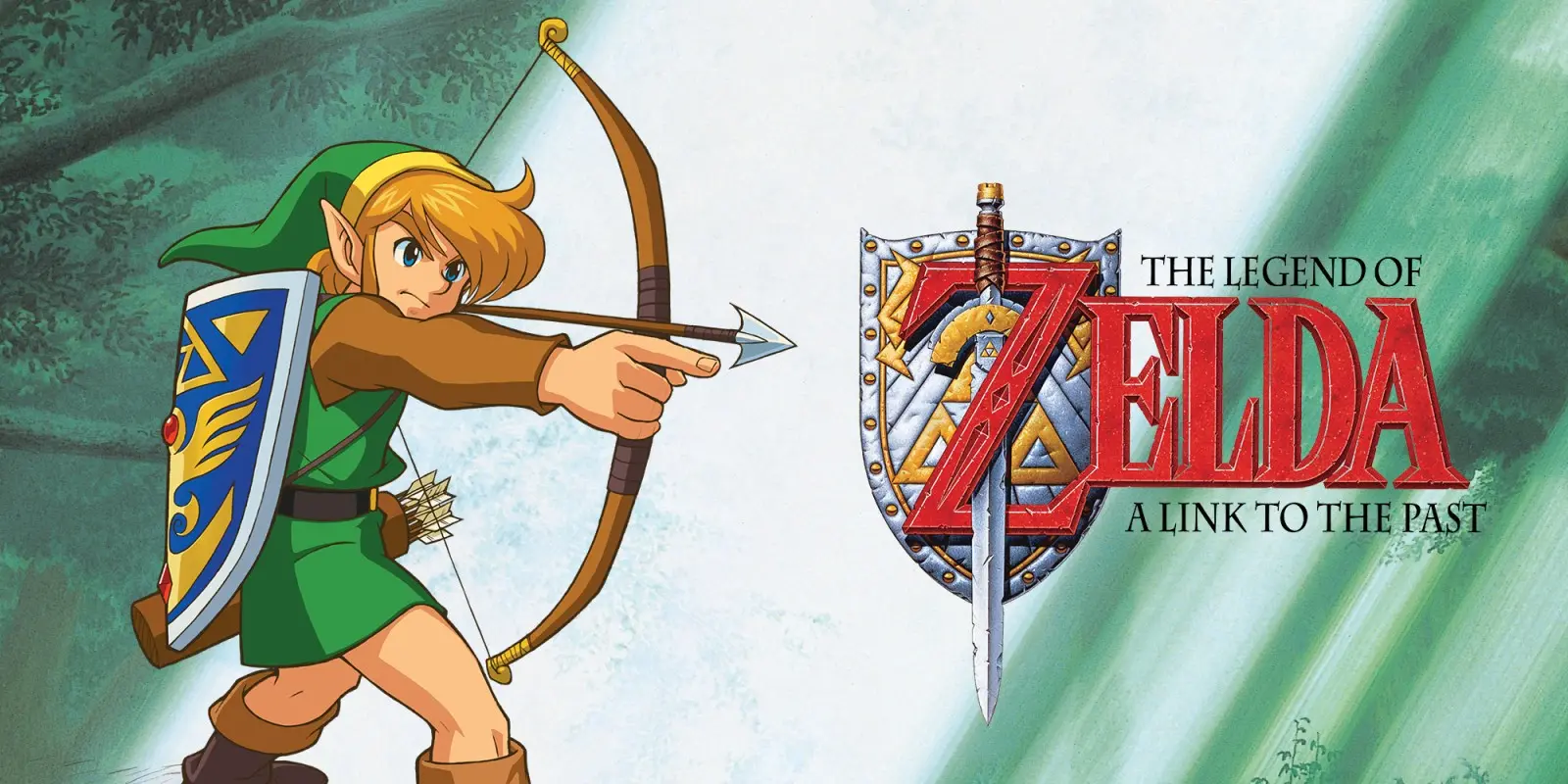
Cover art for The Legend of Zelda: A Link to the Past
Wake up, Link! Wake up, your uncle just went outside in the pouring rain. Follow him to the castle, that’s where he went. Sneak in, save the princess, and then just go through three dungeons, then maybe 7 or so more, collect a few medallions here and there, travel to another […] You get the picture.
While no laughing matter, the NES hadn’t been explored or powerful enough to pull off a game of this magnitude at the time the original The Legend of Zelda came out. The 16-bit sprite based 2D art style never really went out of fashion, which contributed greatly to how wonderfully this game has aged. All in all, it remains a satisfying title in the series, being somewhat iterated upon in later 2D games such as Link’s Awakening and most famously A Link Between Worlds.
I don’t have enough words for this, so bullet points, I guess:
- This game can be pretty challenging for people not used to 2D action games. If you’re playing The Legend of Zelda for the first time, while this is a great game, expect to feel a little challenged. If not by the more obscure puzzles, then at least by the final boss.
- The soundtrack is iconic, and was brought back time and time again in later titles in the series. It’s perhaps a little hard to notice with the limitations of the sound chip, but listen to the A Link to the Past Suite, from Symphony of the Goddesses.
- What Ocarina of Time is to 3D games in the franchise, A Link to the Past is to the 2D titles. I don’t think I need to say any more.
Trust me, I’m not going to write a lot here but the game is incredible.
Should you wish to play it, you can play this title through the Nintendo 3DS Virtual Console if you happen to have a 3DS from the New Nintendo 3DS family of systems, or as a title in the SNES package for Nintendo Switch Online subscribers on the Switch. It’s available as a Virtual Console title for the Wii, Wii U, and given it’s from an old console, it’s rather easy to get creative.
More to come in the future, I guess?
I thought this article would be pretty easy to write, but turns out I played more games than I could remember facts for. Now I’ve grown weary after trying to finish this for a few weeks — I’m no writer, please don’t judge me — and want to just commit it and be done with it for now.
Games that I want to add to this page or another one in the future:
- The Legend of Zelda: A Link Between Worlds
- The Legend of Zelda: Tri Force Heroes
- The Legend of Zelda: Four Swords Anniversary Edition
- The Legend of Zelda
- Zelda II: The Adventure of Link
I originally planned to add all of them here, save for Adventure of Link, which I’ve never played. Here’s my promise to myself to play it someday and come here to bash on or praise it. If you read this entire piece, you must’ve been really bored.